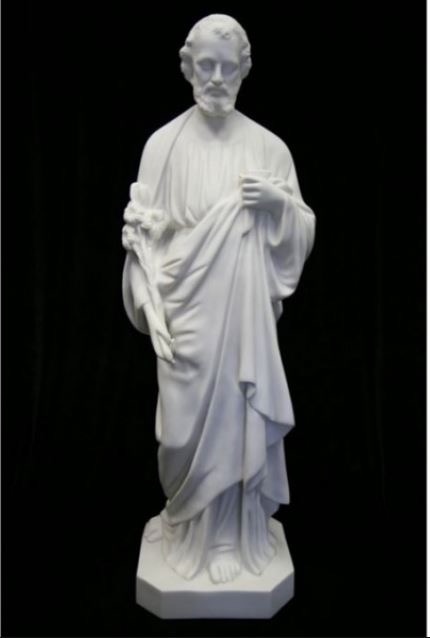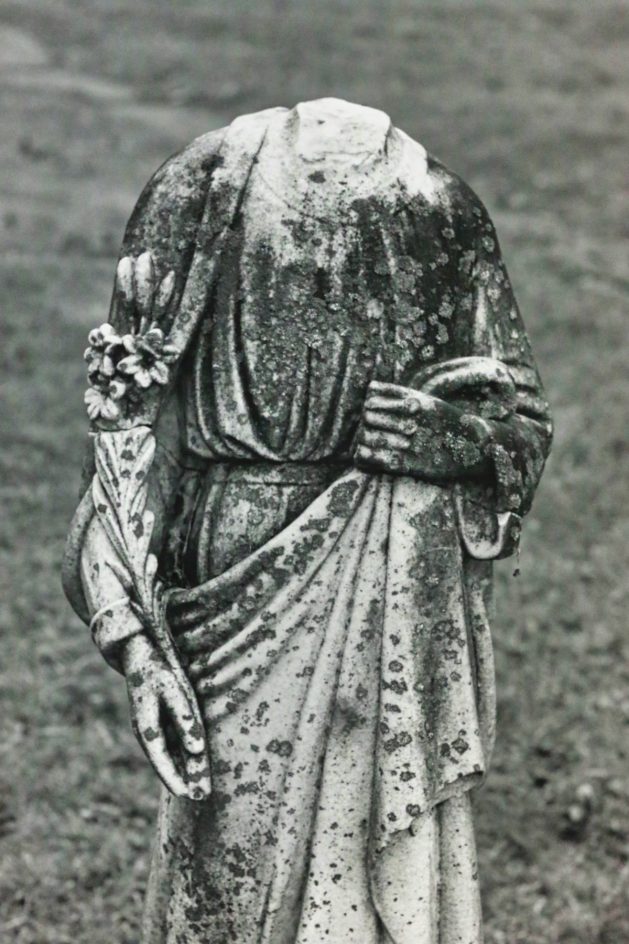A kind blog reader who asked not to be identified may have just solved our decade-old mystery over which saint our headless statue on our farm represents in the Catholic faith.
Most suggestions have said St. Therese; others say St. Francis. But I think we finally nailed it down. It is almost certainly St. Joseph, Jesus Christ’s dad.
My reader, who is Catholic, and also Polish, grew up learning how to identify statues of saints because her churches had so many statues.
St. Joseph, she said, was often portrayed as holding lilies. The lilies signify that he was the husband and protector of the Virgin Mary, lilies represent Mary.
She pointed out that the early statues of saints were always created, showing the same item to make it easy for people to identify them since most people in medieval times couldn’t read.
My Catholic/Polish friend also sent a photo of a statue of St. Therese, who is always seen holding her hands up, they are holding roses and a crucible. That’s not our statue.
Thanks to her and to the Internet. Someone out there always knows something.
Above, our statue at Bedlam Farm.
St. Joseph is a big deal. He is the husband of the Virgin Mary, the legal father of Jesus, and the Prince and Patron of the Universal Church.
According to Wikipedia, St. Joseph cuts a wide swath, he is the patron saint of unborn children, fathers, immigrants, workers, employment, explorers, pilgrims, travelers, carpenters, realtors, he is against doubt and hesitation, and is for a happy death.
He’s a busy saint, watching over a small farm should be a snap. I always thought the statue was of a woman, but in the photo sent to me, it is St. Joseph. And as some readers pointed out, there is no hint of a breast
I thank my anonymous reader for taking the time to answer this question; it stumped an awful lot of people for a long time. I’ve decided not to clean the statue; his markings suggested great depth and wisdom.



Hmmm. Interesting. The statue in my former church must be St. Joseph in drag trying to be St Therese of the Little Flower.
Glad you figured out your is St. Joseph and not in drag!!!
Not sure what you’re talking about Jim, I know you’re trying to be witty, but I’m slow, perhaps try again in simple English for me..
I am glad the mystery of the statue is solved. I am even more glad to hear you are not going to clean it up. I like the definition and highlights this lovely old statue bears from the test of time.
Aha! Looks just like it! Bravo… nice to know
Thank-you, Jon, for a beautiful history of the statue in ancient times. I never knew that.
Very interesting! Thanks for sharing your mystery!
What a coup. Thanks to your blogger. I never would have associated St Joseph with flowers, but the explanation makes perfect sense.
My heart lifts. St Joseph is a fine saint.
Some people had suggested it earlier, but the flowers threw us off. my reader knew what she was talking about, though, I could see that…